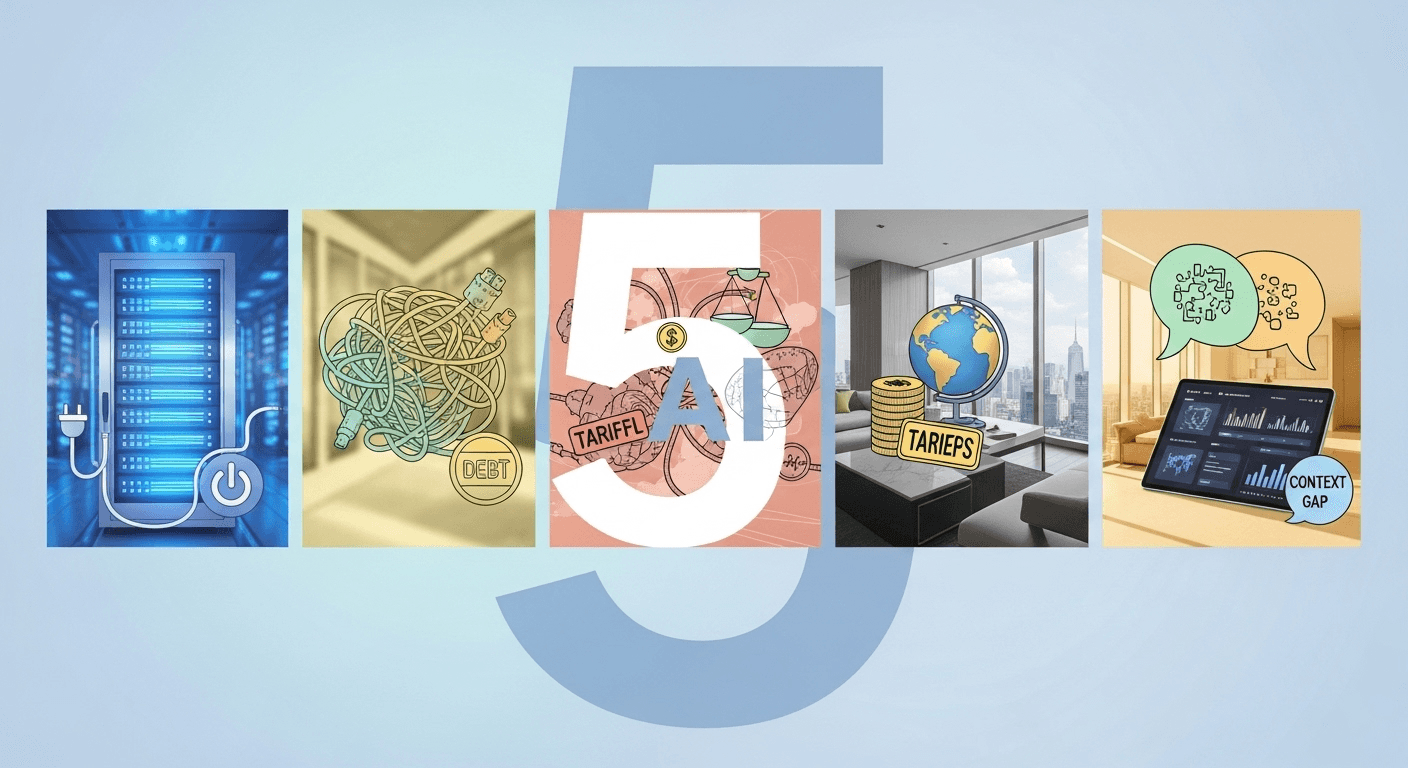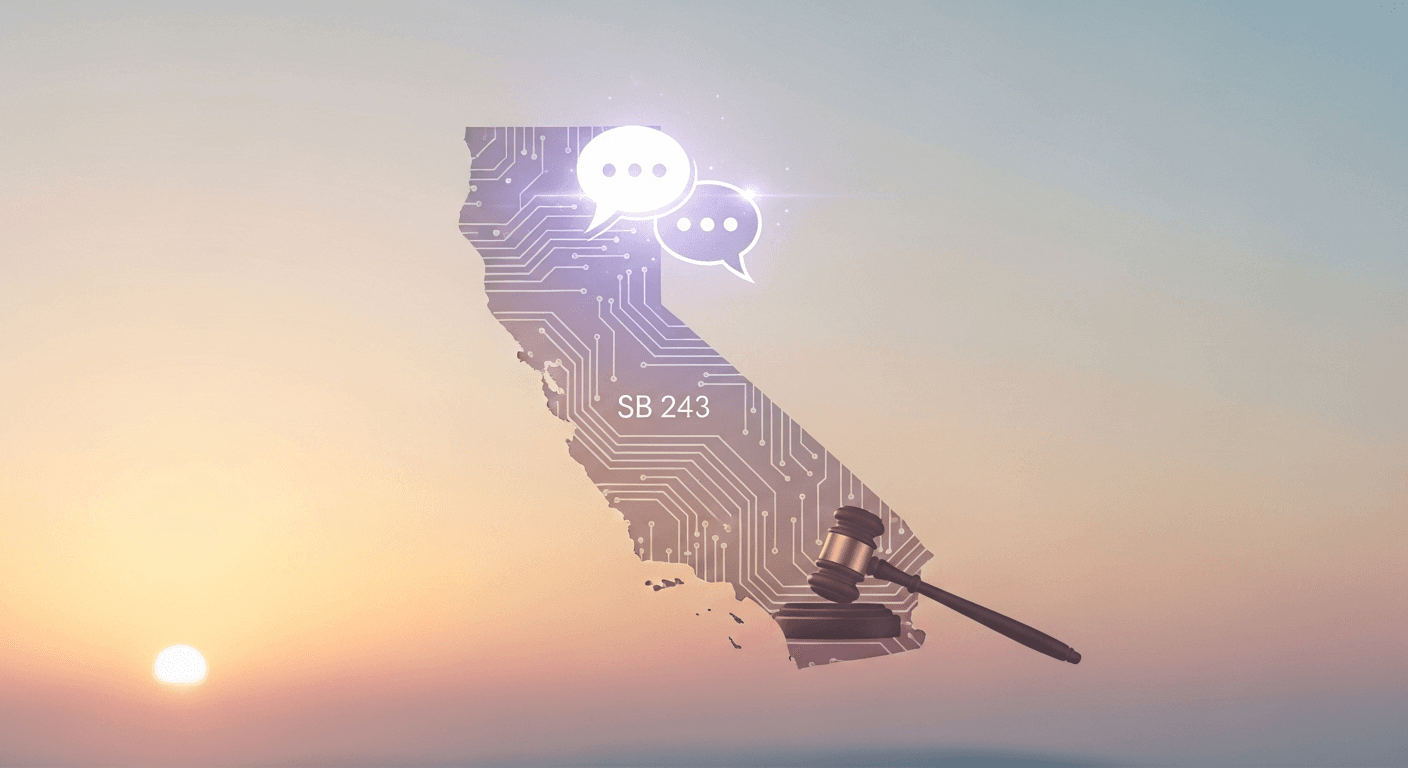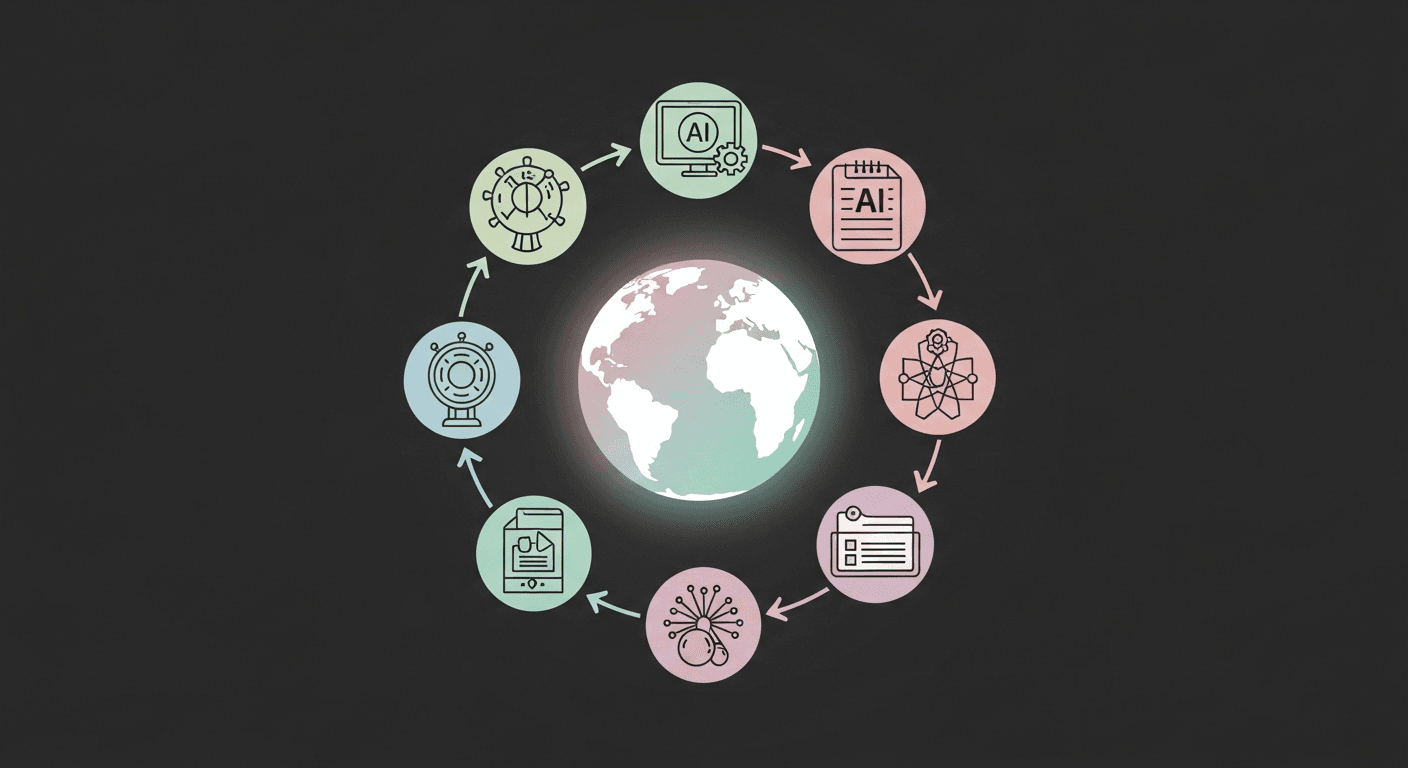DeepMind’s 145-Page AGI Safety Plan: What’s Strong, What’s Lacking, and What to Monitor

DeepMind’s 145-Page AGI Safety Plan: What’s Strong, What’s Lacking, and What to Monitor
Google DeepMind has unveiled a comprehensive 145-page paper that details their approach to ensuring the safety and alignment of advanced AI systems. While the document is ambitious and thorough, it prompts difficult questions about the adequacy of safety measures, the criteria for verification, and the effectiveness of self-regulation in the face of rapidly evolving technology.
Why This Matters Now
As frontier AI models become increasingly adept at coding, reasoning, and strategic planning, the looming prospect of artificial general intelligence (AGI) has spurred companies and governments to hastily define safety standards and oversight. DeepMind’s latest framework represents a significant effort to outline a detailed safety plan. However, skeptics, including many policy experts and researchers, appreciate the thoroughness but caution that it may overly rely on self-assessment and promises without enforceability, a sentiment echoed in reports from sources like TechCrunch.
If you’re looking to understand the new concepts presented here, how they align with existing guidelines, and why some remain skeptical, this guide breaks it down in straightforward language, providing links to reliable sources for further exploration.
What DeepMind Is Proposing
The paper outlines a multi-faceted strategy for AGI safety. While the phrasing is unique to DeepMind, the foundational pillars resonate with a growing consensus within the field:
- Risk-Based Development: Higher-risk capabilities will trigger stronger safeguards and more rigorous testing before and after release, resembling widely accepted risk management frameworks, such as NIST’s AI Risk Management Framework.
- Evaluation and Red Teaming: Models will undergo structured safety evaluations to assess risks of misuse (e.g., cyber or bio threats), dangerous autonomy, and deception, alongside ongoing adversarial testing by both internal and external experts.
- Alignment Techniques: Systems will be trained using methods like reinforcement learning from human feedback (RLHF), constitutional AI, tool-use constraints, and scalable oversight, aiming to align better with human intentions and values.
- System-Level Controls: Beyond just model training, DeepMind has proposed strategies for containment, access restrictions, rate limiting, and incident response plans to mitigate real-world risks during deployment.
- Phased Deployment: Gradual rollouts and mechanisms for capability gating and kill-switches will help avoid catastrophic failures while allowing time for monitoring and mitigation.
- External Accountability: The plan hints at the establishment of third-party audits, public reporting, and collaboration with regulators, linking company practices to the evolving standards of global governance.
DeepMind’s approach builds on its earlier “Levels of AGI” proposal, which aims to provide the industry with common terminology for assessing progress and risks associated with increasingly general systems.
Where the Plan Feels Strong
Several aspects of the framework align well with the expectations policymakers and standards organizations have from leading AI developers:
- Compatibility with Established Risk Frameworks: By focusing on identifying, measuring, and mitigating risks, the plan reflects the principles of the NIST AI Risk Management Framework, which many organizations use for their AI governance.
- Emphasis on Evaluations over Assumptions: The plan advocates for red teaming and systematic safety evaluations, aligning well with the UK AI Safety Institute’s initiative to assess models for emergent dangerous capabilities, risks of persuasion, and jailbreak resilience, followed by documentation of findings.
- Recognition of System Safety: Understanding that modern AI risks often emerge from the integration of models with various tools, data, and user interfaces, DeepMind focuses on access controls, monitoring, and incident response, consistent with security-conscious strategies like Google’s frontier safety initiatives.
- Acknowledgment of External Oversight: The paper’s call for independent audits, transparency reports, and commitments to global partnership aligns with principles from the Bletchley Declaration and OECD AI Principles.
In essence, the framework does not attempt to reinvent the wheel. It weaves DeepMind’s research strengths into a governance model that regulators and standards organizations can appreciate.
Why Skeptics Are Not Convinced
Critics highlight significant gaps where declarations and internal policies may fall short:
- Limits of Self-Regulation: Without legally enforceable standards, independent testing, or consequences, safety assurances could be seen as mere safety-washing. Researchers have shown that closed models can be bypassed or steered towards risky behavior even after safety adjustments.
- Vague Thresholds and Limits: The plan’s reliance on ambiguous terms like “escalating safeguards” and “phased deployment” have prompted skeptics to ask for clear, testable tripwires: which specific risks should prompt a pause, rollback, or non-release, and who certifies these measurements?
- AGI Remains an Uncertain Target: There’s no consensus on what precisely defines AGI and its capabilities. While DeepMind’s “Levels of AGI” provide a useful framework, critics express concern that one vendor’s definition may unduly influence the landscape.
- Competitive Pressures Undermine Safety: As labs race to lead in AI development, the margins for safety can diminish. Many argue that clear government standards, audits, and reporting frameworks can mitigate the pressure to deliver risky features hastily.
- Lack of Transparency Erodes Trust: Claims of safety hold little weight without public evidence. When model weights, evaluation results, and safety incidents are kept confidential, external researchers struggle to reproduce findings or identify potential blind spots.
Bottom line: the paper is a significant effort, but its success hinges on independent validation and clearly enforceable thresholds. This skepticism sits at the heart of the discussion.
How This Fits with the Broader Safety Landscape
DeepMind’s framework represents one part of a rapidly changing landscape of norms and regulations for frontier AI:
- Government Policies: The US Executive Order on AI mandates that developers of powerful models report safety test outcomes, while the EU AI Act imposes binding requirements for high-risk systems and adds obligations for general-purpose and frontier models.
- Standards and Certifications: NIST’s AI RMF, ISO/IEC 23894 on AI risk management, and the new ISO/IEC 42001 management system standard provide organizations with practical guidelines for audits, documentation, and ongoing improvement.
- Industry Safety Policies: Anthropic’s Responsible Scaling Policy and OpenAI’s Preparedness Framework outline specific evaluation regimens and model gating tied to measured risk, offering useful benchmarks for what “thresholds” can mean in practice.
- Independent Evaluation: Organizations like the UK AI Safety Institute and MLCommons are creating shared safety benchmarks and red-teaming protocols, which are vital for reproducible and comparative testing across labs.
Practical Takeaways for Teams Deploying Advanced AI
You don’t have to be DeepMind to implement effective safeguards. If you develop or integrate powerful models, consider the following:
- Map Your Risks: Utilize a simplified version of NIST’s AI RMF to identify potential harms and the individuals affected. Keep the risk assessment dynamic—update it regularly.
- Test Like an Adversary: Conduct structured red teams and safety evaluations before launching. Challenge your own system using known vulnerabilities and adversarial inputs. Document findings, make necessary fixes, and retest.
- Gate Capabilities: Allow higher-risk tools and actions only when users or organizations demonstrate the need and readiness. Log sensitive operations and require additional review for significant actions.
- Plan for Incidents: Implement kill switches, rate limits, and rollback strategies. Carry out practice drills. Make sure to have a contact point for reporting vulnerabilities and a timeline for disclosure.
- Invite Outside Scrutiny: Engage independent auditors, share evaluation results whenever possible, and align with recognized standards to foster trust.
These actions won’t eliminate risks, but they will help make them measurable and manageable, which is the essence of modern AI safety practices.
What to Monitor Next
Three indicators will reveal whether DeepMind’s safety plan materializes into more than just rhetoric:
- Independent Evaluation Results: Regular publication of third-party test outcomes related to dangerous capabilities, persuasive risks, and autonomy, sufficient for reproducibility.
- Clear Thresholds: Publicly available, measurable criteria that will trigger capability gating, delays, or non-release, along with incident reports where such thresholds are met.
- Regulatory Alignment: Early adherence to the EU AI Act and US reporting requirements, along with participation in shared benchmarks facilitated by groups like the AI Safety Institute and MLCommons.
Conclusion
DeepMind’s 145-page paper is a meaningful effort to clarify how a leading AI lab intends to develop and deploy advanced systems safely. Its framework aligns with significant standards, incorporates proven strategies from security and safety engineering, and encourages external scrutiny. However, the skepticism is equally substantial: without transparent, independent testing and enforceable thresholds, even a well-conceived framework may falter in the face of competitive pressures.
The constructive path forward is not an either-or scenario. We will likely need both robust internal safety protocols at labs like DeepMind and credible, public, third-party evaluations and regulations. This dual approach is essential for turning promises into verification.
FAQs
What is AGI, and how close are we to achieving it?
AGI refers to systems capable of performing a wide range of cognitive tasks at or above human level. There’s no consensus on a timeline. DeepMind’s “Levels of AGI” provide milestones for tracking progress, but defining and measuring AGI remains an active area of research.
How does DeepMind’s plan differ from OpenAI’s Preparedness Framework?
Both share fundamental concepts like risk tiers, safety evaluations, and capability gating. However, distinctions arise in specific details: how capabilities are evaluated, what triggers a pause, and how results are communicated. Independent testing will be crucial for practical comparison.
What constitutes a safety evaluation?
Safety evaluations are structured tests that assess a model’s behavior under stress: its resistance to jailbreaks, ability to aid in cyber or bio misuse, propensity for deception, and resilience against adversarial prompts. Effective evaluations are reproducible and regularly updated as models evolve.
Will regulation hinder innovation?
Thoughtful regulations can mitigate catastrophic risks and instill public trust without stifling progress. Many requirements, such as risk assessments, testing, and incident responses, reflect practices already adopted by high-performing engineering teams.
How can smaller teams apply these concepts?
Begin with a basic risk inventory, carry out fundamental red-team scenarios, gate significant actions, maintain audit records, and adhere to a standard like NIST’s AI RMF or ISO 42001 for continuous improvement. You can scale your approach based on your risk profile.
Sources
- TechCrunch’s Coverage of DeepMind’s AGI Safety Paper
- Google DeepMind: Levels of AGI
- NIST AI Risk Management Framework 1.0
- UK AI Safety Institute
- The Bletchley Declaration on AI Safety
- OECD AI Principles
- OpenAI Preparedness Framework
- Anthropic’s Responsible Scaling Policy
- ISO/IEC 42001 Artificial Intelligence Management System
- EU AI Act – Official Journal of the European Union
- US Executive Order 14110 on AI
- MLCommons AI Safety Working Group
- Stanford CRFM Jailbreaks and Red Teaming Resources
- Google on Frontier Safety
Thank You for Reading this Blog and See You Soon! 🙏 👋
Let's connect 🚀
Latest Blogs
Read My Latest Blogs about AI

5 AI Stories Shaping Business Today: Power, Data Debt, Tariffs, Penthouses, and the Context Gap
A clear roundup of 5 AI trends shaping business now: power-hungry data centers, data debt, AI for tariffs, luxury sales with AI, and the context gap — with takeaways.
Read more


